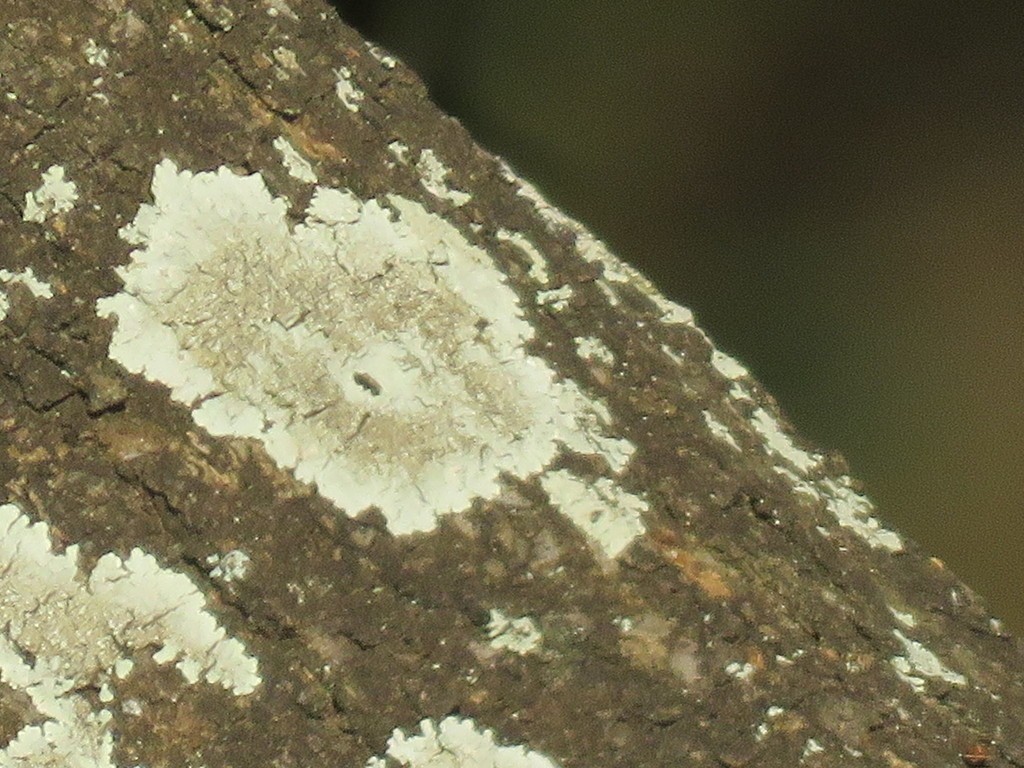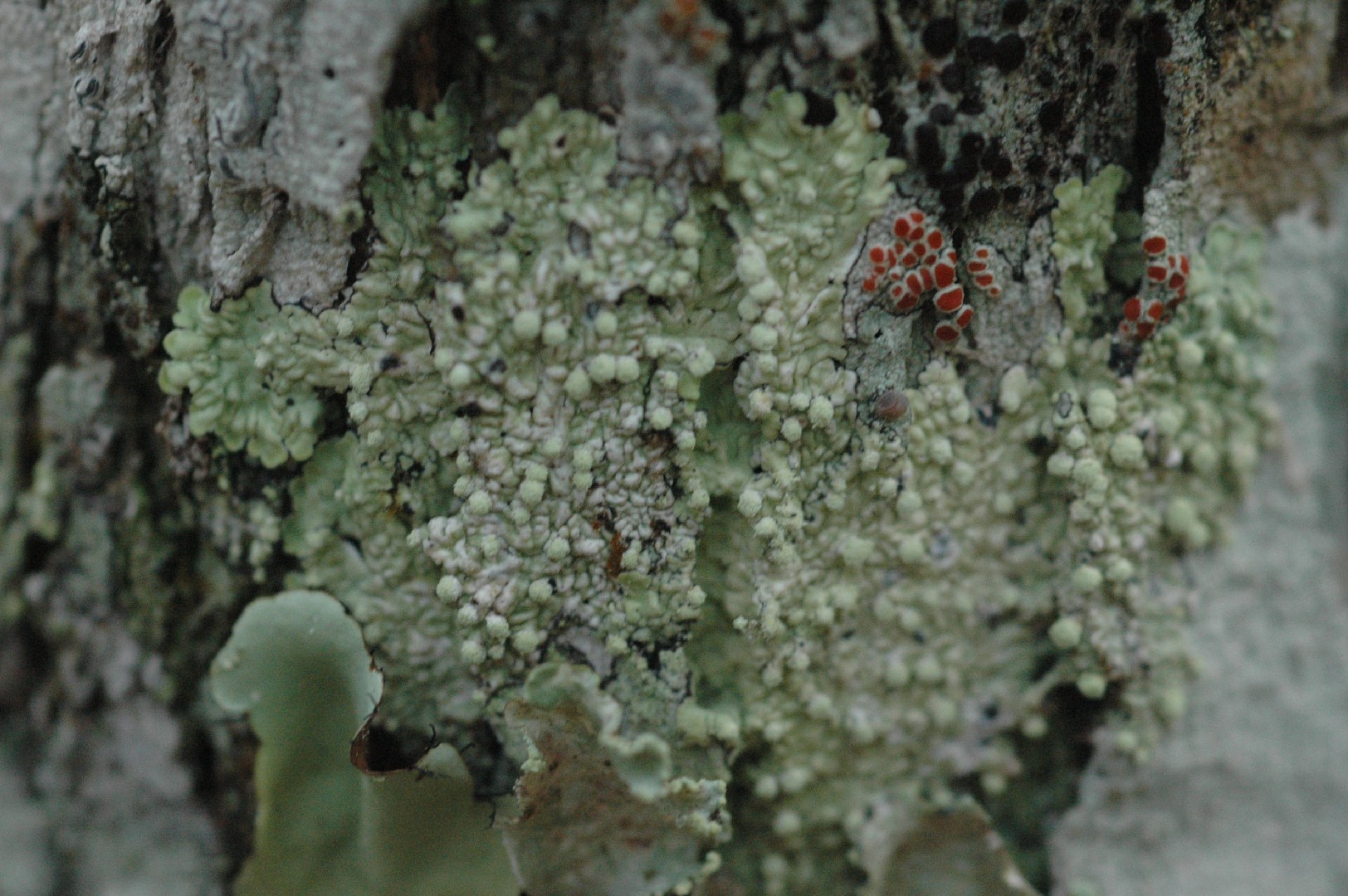Dirinaria lichen
Scientific name: Dirinaria
Dirinaria lichen
Scientific name: Dirinaria
 Photo By Jennifer Rycenga , used under CC-BY-4.0 /Cropped and compressed from original
Photo By Jennifer Rycenga , used under CC-BY-4.0 /Cropped and compressed from original Description
Dirinaria lichen is a fascinating group of lichens known for their resilience in diverse environments, from humid forests to arid regions. They often form leafy, crusty patches on tree bark or rocks. These lichens are remarkable for their symbiotic relationship between a fungus and algae, which allows them to produce their food through photosynthesis. Some species within this group have been used traditionally for various human applications, including dyes and medicinal purposes.
Species of Dirinaria lichen
Scientific Classification
Phylum
Sac fungi Class
Lecanoromycetes Order
Teloschistales Family
Physciaceae Genus
Dirinaria lichen 